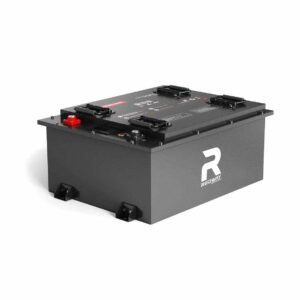How to Integrate Off-Grid Power Systems with RV Electronics?
Off-grid RV power solutions enable seamless integration with vehicle electronics through advanced energy storage, solar panels, and inverters. These systems prioritize compatibility with RV appliances, battery management, and voltage regulation, ensuring reliable power for lighting, refrigeration, and entertainment systems. Lithium batteries and smart inverters optimize energy use while minimizing weight and space.
What Are the Core Components of Off-Grid RV Power Systems?
Off-grid RV power systems rely on solar panels, lithium batteries, inverters, and charge controllers. Solar panels harvest energy, stored in lithium batteries for efficiency and longevity. Inverters convert DC to AC power, while charge controllers regulate voltage. Advanced systems include energy monitors and automatic transfer switches for seamless transitions between power sources.

How Do Solar Panels Enhance Off-Grid RV Power Solutions?
Solar panels provide renewable energy, reducing reliance on generators. Flexible or rigid panels mount on RV roofs, charging batteries during daylight. MPPT charge controllers maximize energy harvest, even in low-light conditions. Pairing solar with lithium batteries ensures consistent power for electronics like GPS, Wi-Fi routers, and HVAC systems.
Modern solar solutions now incorporate bifacial panels that capture reflected light, increasing efficiency by 15-20%. Portable solar blankets (200-400W) serve as supplemental charging sources during extended stops. For optimal performance, consider these panel types:
| Panel Type | Efficiency | Weight |
|---|---|---|
| Monocrystalline | 20-22% | 40 lbs |
| Polycrystalline | 15-17% | 35 lbs |
| Thin-Film | 10-13% | 25 lbs |
Advanced systems now integrate tilt sensors that automatically adjust panel angles throughout the day, boosting energy capture by up to 30% compared to fixed installations.
Why Choose Lithium Batteries for RV Power Integration?
Lithium batteries outperform lead-acid in energy density, lifespan, and charge speed. They maintain stable voltage levels critical for sensitive RV electronics like inverters and refrigerators. Built-in Battery Management Systems (BMS) prevent overcharging and overheating. Their lightweight design reduces overall RV weight, improving fuel efficiency.
Lithium iron phosphate (LiFePO4) batteries have become the gold standard, offering 3,000-5,000 cycles compared to lead-acid’s 500 cycles. Their 95% depth of discharge capability versus 50% in AGM batteries effectively doubles usable capacity. Consider these comparisons:
| Feature | Lithium | Lead-Acid |
|---|---|---|
| Cycle Life | 3,000+ | 500 |
| Charge Time | 2-4 hrs | 8+ hrs |
| Weight (100Ah) | 31 lbs | 60 lbs |
New smart batteries now feature Bluetooth connectivity for real-time monitoring through smartphone apps, providing voltage readouts, state-of-charge percentages, and temperature alerts.
How to Ensure Compatibility Between Inverters and RV Electronics?
Select inverters with pure sine wave output to mimic grid power, ensuring safe operation for laptops, TVs, and medical devices. Match inverter capacity (watts) to the total load of connected devices. Use automatic voltage regulation to protect against surges. Hardwire inverters directly to the battery bank for stable connections.
What Are the Safety Protocols for Off-Grid RV Power Systems?
Install circuit breakers between batteries and inverters to prevent short circuits. Use flame-retardant wiring and secure mounts for components. Ensure proper ventilation for lithium batteries to avoid thermal runaway. Ground all electrical systems and use surge protectors when connecting to external power sources.
How Does Weather Affect Off-Grid Power Performance in RVs?
Extreme cold reduces lithium battery efficiency, requiring insulated battery compartments. High heat accelerates solar panel degradation. Rain and snow necessitate waterproof connectors and tilt-mounted solar panels for runoff. Wind-resistant mounting brackets prevent panel displacement during storms.
“Modern off-grid RV systems demand precision engineering. At Redway, we prioritize bidirectional inverters that allow vehicles to power small homes during outages. The future lies in AI-driven energy management systems that predict usage patterns and adjust storage dynamically.” — Redway Power Systems Engineer
Conclusion
Integrating off-grid power with RV electronics requires strategic component selection, safety measures, and weather adaptations. Lithium batteries, smart inverters, and solar panels form the backbone of reliable systems. As technology advances, AI and modular designs will further streamline RV energy independence.
FAQs
- Can I retrofit my older RV with an off-grid power system?
- Yes, but ensure your RV’s wiring can handle new components. Upgrade to marine-grade cables and install a modern breaker panel.
- How much does a full off-grid RV system cost?
- Prices range from $3,000 to $15,000, depending on solar capacity, battery type, and inverter quality. DIY installations reduce labor costs.
- Do off-grid systems require regular maintenance?
- Lithium batteries need minimal upkeep. Clean solar panels monthly and inspect wiring annually for corrosion or wear.
